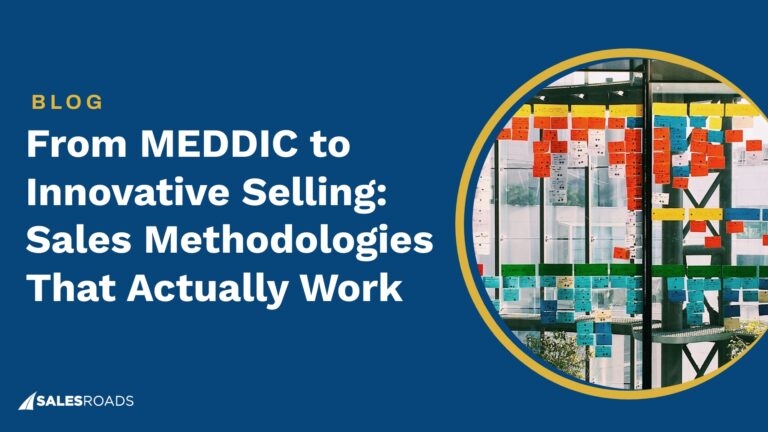In today’s competitive business environment, generating new prospects can be a challenging task. Knowing the right strategies and tools to attract qualified leads is the first step to consistently fill your sales pipeline with a steady stream of conversion opportunities.
The Fundamentals of Lead Generation Campaigns
Lead generation entails attracting the attention of prospects and converting them into customers. This process aims to create a pool of qualified leads interested in your product or service and likely to become buyers.
The best lead generation campaign varies depending on the target audience and the brand. The key is to find channels that work for your business and continuously optimize and refine your methods.
Top Lead Generation Strategies for B2B
B2B companies can benefit from the following tried-and-true methods of generating new leads:
Content Marketing
Content marketing for B2B lead generation is a strategic approach that involves creating, publishing, and distributing relevant content to attract, engage, and nurture potential customers. These materials can come in several formats, including:
- Blog posts: Blogs are a great way to share valuable information, insights, and news with your target audience. You can position your business as a thought leader in your industry by publishing regular blog posts, driving traffic to your website, and generating leads.
- Ebooks and guides: Ebooks and guides are long-form content that provides in-depth information on a specific topic. They are an excellent way to establish your business as an authority in your industry and educate your target audience.
- Infographics: Infographics are a visual representation of information and data. This content format can effectively present complex information in an easy-to-understand format, engage your target audience, and generate brand authority.
- Videos: Videos are an engaging and effective way to educate and entertain your target audience. From product demos and tutorials to customer testimonials and thought leadership videos, you can use different formats to generate leads and drive engagement.
- Webinars: Webinars are live, online events where you can educate, inform, and engage your target audience. They are an effective way to build trust and establish your business as a thought leader, generate leads, and drive sales.
- Case studies: Case studies are in-depth explorations of how your business has helped a customer solve a problem or achieve a goal. You can use these to showcase your expertise and build trust with your target audience.
Search Engine Optimization (SEO)
In this video, Sam Oh, Ahrefs’ VP of Marketing and Head of Video Content, explains its benefits:
SEO is a critical component of lead generation for B2B companies. Optimizing your website for search engines can help you gain greater visibility and efficiently reach your target audience.
Here’s how SEO can boost your lead generation efforts:
- Increase visibility: By ranking higher in search engine results pages (SERPs), your website becomes more visible to your target audience. This increases the chances of attracting new visitors who may eventually become leads.
- Drive relevant traffic: By optimizing your website for relevant keywords, you attract more targeted and relevant traffic to your pages. This increases the chances of attracting visitors interested in your products or services.
- Improve user experience: SEO also involves optimizing your website user experience. This includes improving website speed, making your pages mobile-friendly, and creating high-quality content. A good user experience will keep visitors engaged and increase their chances of becoming leads.
- Increase trust and authority: By ranking higher in SERPs, you establish your website as a trusted and authoritative source in your industry. This will increase your business’s credibility, making visitors more likely to trust your brand and ultimately become leads.
According to a survey conducted by the Search Engine Journal, 49% of marketers say that organic search has the greatest ROI of any marketing medium.1 This demonstrates how successful this strategy can be when executed correctly.
Social Media Marketing
When implemented properly, social media can be an effective channel for B2B lead generation. It gives businesses the opportunity to reach a large and engaged audience.
These are the steps on how to use social media for B2B lead generation:
- Identify your target audience: Determine which social media channels your target audience uses and concentrate your efforts on those platforms.
- Create valuable content: Share valuable and relevant content on social media, including blog posts, whitepapers, case studies, and infographics. This will establish your brand as an expert in your field, attracting potential leads to your website.
- Utilize LinkedIn: LinkedIn is a powerful B2B lead generation platform with a large community of professionals and decision-makers. Create a strong LinkedIn profile, engage in industry groups, and share valuable content to attract leads.
- Run targeted ads: Use social media advertising to reach your audience with targeted ads. Utilize tools such as lookalike targeting to reach users who are similar to your existing customers and leads.
- Monitor and engage: Regularly monitor your social media accounts to boost engagement. Respond to comments, answer questions, and engage with your followers to build relationships and generate leads.
- Measure and optimize: Track your results and social media efforts based on performance data. This will help you determine what is working and what is not, allowing you to make data-driven decisions to improve your results.
Appointment Setting
Appointment setting is a lead generation strategy that involves scheduling meetings with potential customers for account executives (AEs) to nurture. This is a powerful technique for generating leads, as it allows AEs to have personal conversations with potential customers. Through this process, you can qualify leads, understand their needs, and determine if they are a good fit for your product or service.
Here’s our guide on how to build an effective appointment setting program:
- Define your target audience: Identify your ideal customer profile, including demographics, pain points, and buying motivations. This will help you focus your appointment setting efforts on the right audience, increasing the chances of success.
- Create a script: Develop a script for your sales development representatives (SDRs) to use as a guide when making calls. The script should include an introduction, questions for lead qualification, and a call-to-action to schedule an appointment.
- Train your team: Train your SDRs on how to effectively use scripts, handle objections, and close appointments. Provide ongoing training and coaching to improve their skills and performance.
- Establish metrics: Establish metrics to track the performance of your appointment setting program. This includes numbers such as appointment rate, conversion rate, and cost per appointment.
- Use technology: Use technology to automate and optimize your appointment setting program. You can use dialing software to improve call efficiency and CRM software to track and manage leads and appointments.
- Optimize and refine: Continuously refine and optimize your appointment setting program based on performance data and feedback from your team. Make changes as needed to improve results and achieve your goals.
If you can’t afford to invest the time, money, and workforce into developing an in-house appointment setting program, outsourcing can be a great solution.
Outsourced appointment setting is the practice of hiring an external agency or individual to handle the process. This approach can benefit businesses that lack the resources or expertise to manage this aspect of the sales process. It allows companies to access experts and technologies that can increase the effectiveness of their appointment setting program.
Email Marketing
Email marketing is a cost-effective way to generate leads and build relationships with your ideal customers. By sending targeted emails to a list of subscribers, you can educate them about your product or service and encourage them to take action. This can include newsletters, promotional emails, and nurture campaigns.
Here are the steps on how to use email marketing for B2B lead generation:
- Build a targeted email list: Start by building a targeted email list of potential customers. This can be done through a variety of methods, including website opt-ins, lead magnets, and purchasing.
- Segment your list: Segment your email list based on factors such as industry, job title, and location. This will allow you to send targeted and relevant emails to each group, improving the effectiveness of your campaigns.
- Create compelling content: Develop engaging and relevant email content that will appeal to your target audience. You can include whitepapers, case studies, and educational content that provides value to potential leads.
- Personalize your emails: Personalize your emails with the recipient’s name and other relevant information to improve engagement and increase the likelihood of a response.
- Test and optimize: Test different aspects of your email campaigns, including subject lines, content, and calls-to-action, to determine what works best. Optimize your campaigns based on your testing results to improve continually.
- Use a lead magnet: Offer a valuable lead magnet such as a free trial or a discount in exchange for the recipient’s email address. This will help build your email list and attract new leads.
- Use A/B testing: Use A/B testing to determine which emails are most effective and optimize your campaigns based on the results.
Developing a functional list-building strategy requires expertise, time, and effort. You can outsource this task to a trustworthy service provider to leverage in-depth knowledge from experienced sales teams and speed up lead generation results for your business.
The Common Challenges of B2B Lead Generation
Lead generation is critical for B2B, but it can be a challenging process to implement. Here are the most common obstacles B2B companies face and the effective solutions to overcome them:
Reaching the Right Audience
According to a survey conducted by SEMrush, attracting quality leads is one of the biggest challenges for content marketers.2 Salespeople also face the same problem when running lead generation campaigns.
While reaching your company’s target audience may not always be easy, several methods can help your message get to the right public.
Solution:
Strategies such as targeted advertising, content marketing, and social media outreach work best for this lead generation obstacle. These practices allow you to reach a larger audience and position your brand as an expert in your industry.
Creating Engaging Content
Another common lead generation challenge is creating engaging content that resonates with your target audience. To generate leads, is crucial to invest in valuable, informative, and relevant content that answers your prospects’ questions and addresses pain points.
Solution:
You can use a combination of blog posts, ebooks, infographics, and webinars to provide valuable information to your target audience. These content formats can help position your brand as an expert resource in your industry.
Building Relationships
Building relationships with potential customers is a critical aspect of lead generation. According to a survey by Salsify, 48% of consumers are more likely to buy from brands they know and trust.3 This is a significant challenge in the B2B space because the transactions are more complex and involve more executives making purchase decisions.
Solution:
You can use appointment setting, email marketing, and social media to overcome this challenge and build lasting relationships between businesses. These strategies help you engage with your target audience, allowing you to make a positive impression and build long-term relationships.
Measuring Success
Another common challenge of lead generation is measuring success. Generating leads is only effective if you can track and measure your results to make informed decisions and adjust your approach.
Solution:
Using software such as lead tracking and management systems allows you to monitor your lead generation progress efficiently. Most of these tools have automation features that generate real-time data, allowing you to make better-quality decisions.
Keeping Up With Competition
The competition for lead generation is fierce, and it can be challenging to stand out in a saturated market. This is especially the case for small businesses, as they have limited resources compared to established brand names.
Solution:
You can overcome this challenge by combining targeted advertising, content marketing, and social media to reach your ideal customers and differentiate your brand from competitors.
Bottom Line
Generating new leads ensures that your sales pipeline has a never-ending stream of conversion opportunities. This allows your business to grow and achieve objectives faster by increasing your chances of converting prospects into customers.










